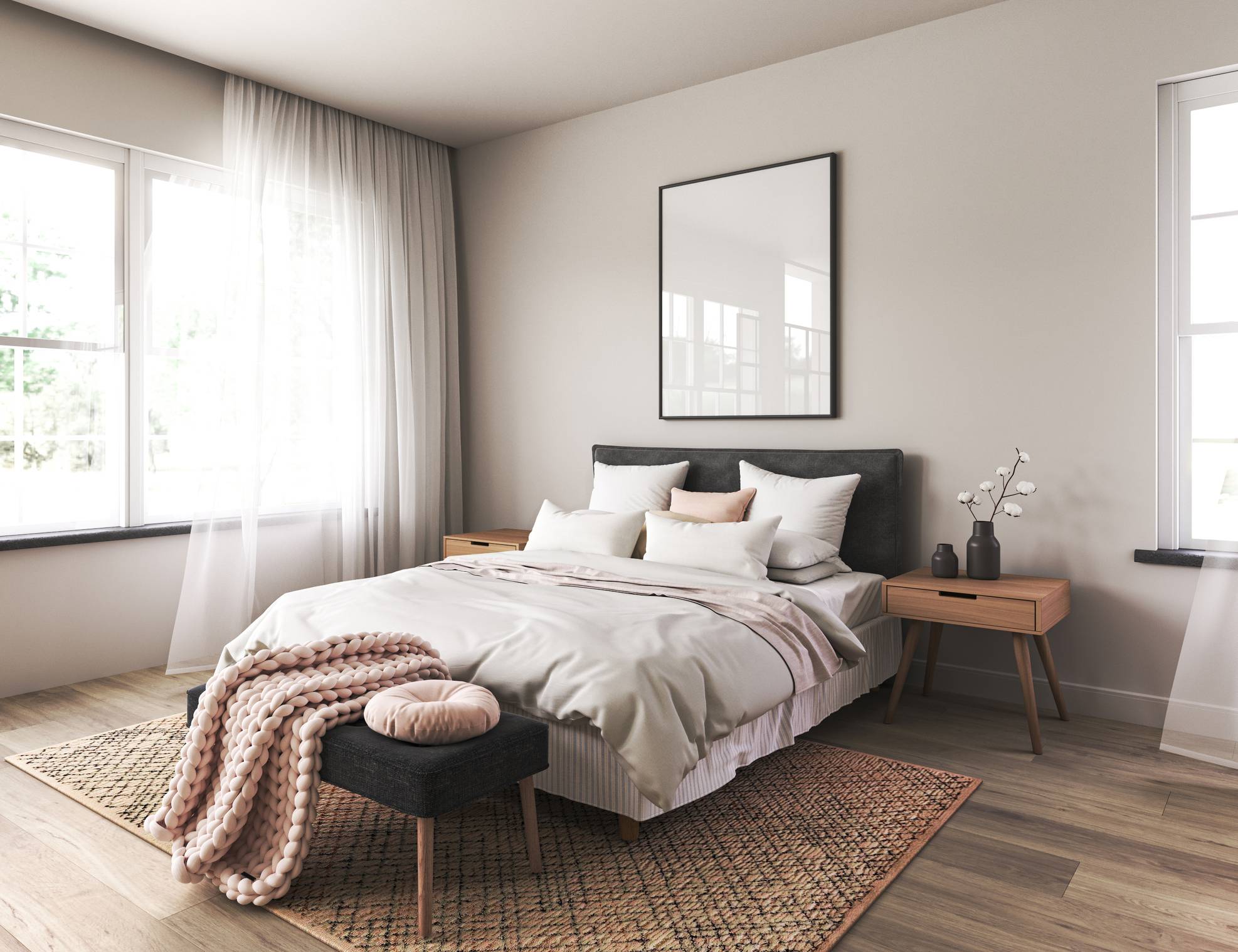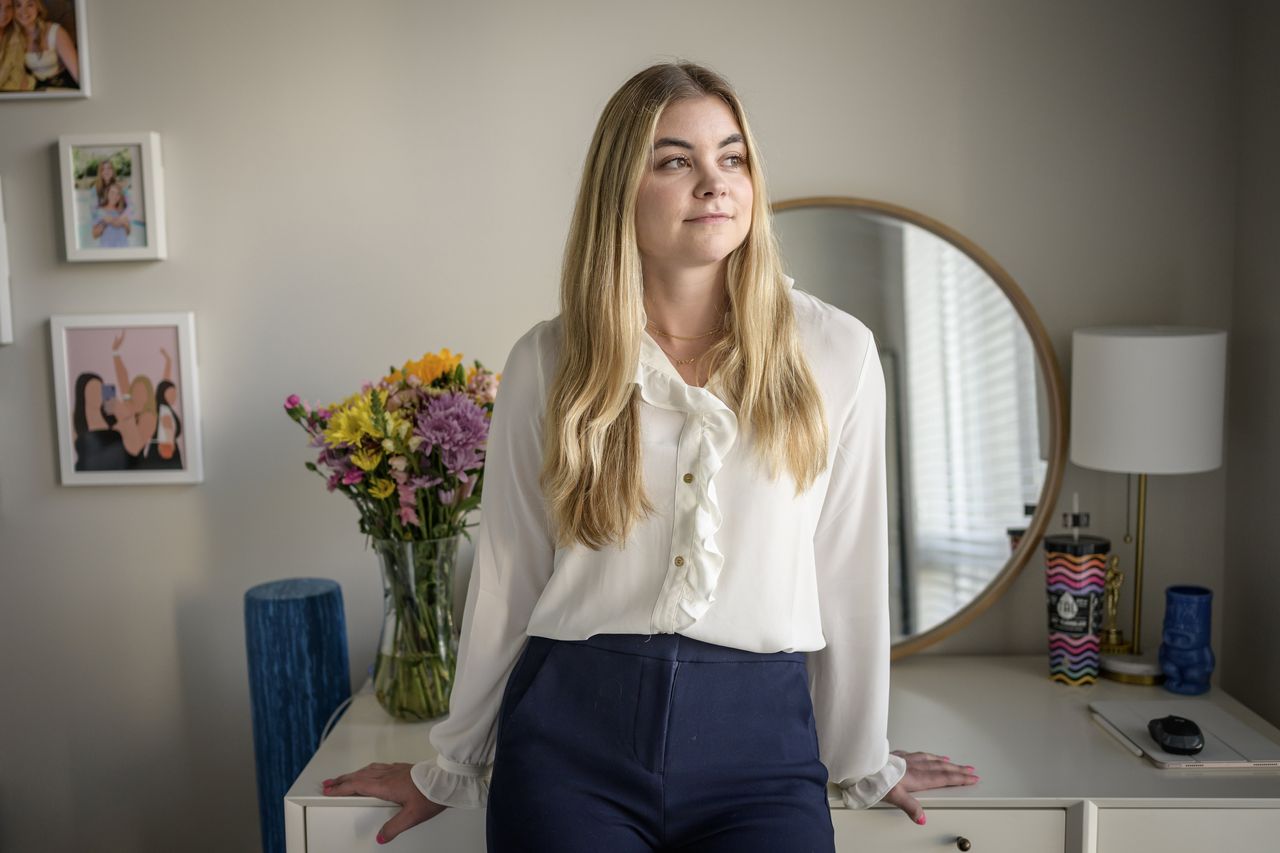Homeowners’ Spare Rooms Worth $700 A Month In Today’s Rental Crisis
Rising mortgage costs and the rental housing shortage have combined to create strong demand for spare room accommodation
Thousands of Australian homeowners are renting out spare rooms amid the rising cost of living, anaemic wages growth and a national shortage of rental homes. A survey by consumer company Finder shows 9% of respondents – extrapolated to more than 600,000 householders — are renting out their spare rooms. They’re making an average of $667 per month or $167 per week by renting out the spare room.
According to the Australian Bureau of Statistics, 77% of households have at least one spare bedroom that they could rent out during today’s rental housing crisis. CoreLogic estimates there is currently a rental housing shortfall of 47,500 homes, making it difficult for many Australians to find a rental home amid weekly rents increase by 30% over the past three years as a result. Meanwhile, homeowners are grappling with large increases in loan repayments due to rapid-fire interest rate rises. The combination of these two problems is creating a strong market for spare-room renting, with apps such as flatmates.com.au and AirBnb facilitating connections.
Finder’s money expert Richard Whitten said: “For many Aussies, living with a roommate is better than the consequences of missed repayments. It’s also a good opportunity to create an extra revenue stream. You could be missing out on thousands of dollars by not making use of your extra room. If you do decide to go ahead with it, you’ll need landlord insurance to be covered. Home insurance doesn’t typically cover damage caused by tenants.”
The number of householders living in larger homes than they require is a structural problem in the Australian housing market that was raised by former Reserve Bank Governor Philip Lowe at a Senate hearing in May.
During the pandemic, many householders switched from smaller forms of accommodation in inner city areas, such as apartments, to larger suburban houses on the city outskirts or in the regions because they were allowed to work from home. The number of people renting share housing also fell as people sought their own space to make working from home more comfortable and to cope with long periods of lockdown.
Now, Dr Lowe says rising interest rates and rents will force people to “economise on housing”. “The way that this ends up fixing itself, unfortunately, is through higher housing prices and higher rents,” Dr Lowe said. “Because as rents go up people decide not to move out of home, or you don’t have that home office, you [get] a flatmate. That’s the price mechanism at work. We need more people on average to live in each dwelling, and prices do that,” he said.
Dr Lowe said strong population growth would exacerbate the housing shortage, and rents would continue to rise. This means demand for accommodation, including spare rooms, is likely to remain high. “We’re going to have 2 percent more people in the country this year, [but] the capital stock is not increasing by 2 percent,” he said.
Rents have risen by 10% in capital cities and 4.1% in the regions over the past 12 months.
Renting it out is the latest method used by homeowners to derive an income from their homes. An explosion in short-stay accommodation apps over the past decade has also seen many homeowners renting separate living quarters or studios at their homes to short-term holidaymakers or travelling executives. In addition, the Finder survey found that 5% of the population – or more than 300,000 people – are renting out a garage. Australian websites such as Parkhouse, Parking Made Easy and Space Out are enabling homeowners to rent parking spaces including their own driveways.
The Finder survey asked respondents about their side hustles to earn extra income amid today’s cost of living crisis brought about by the highest rate of inflation in three decades and rising interest rates. The survey found that 35% of Australians — or 7.1 million people – are earning additional income through a side hustle. ABS data shows a record number of Australians now have a second job. Popular side hustle jobs include dog walking, mystery shopping, tutoring, freelancing and ride-sharing. The favoured non-employed side hustles include recycling cans and bottles, earning an average of $46 a month, making and selling goods ($213 per month) and selling pre-owned goods ($897 per month).
This stylish family home combines a classic palette and finishes with a flexible floorplan
Just 55 minutes from Sydney, make this your creative getaway located in the majestic Hawkesbury region.
Working a regular day, even into the evening, is for mere mortals. Those out to impress start well before dawn.
As a competitive rower in my long-ago prime I sometimes used a racing strategy called fly and die. Sprinting to an early lead often yielded a fast overall time, even if I couldn’t hold my torrid pace through the finish line.
Some professionals take a similar approach to their desk jobs, starting their workdays with a 5 a.m. to 9 a.m. shift. They are up before the sun—and, more important, before their co-workers—to get a jump on the workday and impress the boss.
Nothing screams go-getter like a predawn email! Getting stuff done early allows them to clock out midafternoon and still look like stars, even if their routines require Ben Franklin-esque sleep schedules and vats of caffeine.
Melissa O’Blenis rises by 4:30 a.m. for prayer and Peloton time before starting her job at the digital consulting firm Argano.
“I just love checking things off my list,” she says. “I need that focus time away from Teams messages, email notifications and text alerts.”
A mother with two sets of twins, O’Blenis, 48, often breaks for her kids’ afternoon sports without feeling guilty or judged. Colleagues jokingly call her Granny because her 9 p.m. bedtime makes the early starts possible. But Granny got the last laugh when she was promoted to a director-level role in March.
More than 90% of knowledge workers want to flex their hours, according to surveys by Slack’s Future Forum . In the pandemic many of us got in the habit of handling personal commitments during standard business hours, then catching up on work tasks later .
Now that the office battle is largely over, fighting a return to rigid, 9 a.m. to 5 p.m. schedules might be workers’ last stand. But managers complain about afternoon dead zones when employees are out of pocket.
The solution for more workers is starting sooner instead of finishing later. Workflow software maker Asana reports that 21.4% of users are logging on between 5 a.m. and 9 a.m. this year, up from 19.8% in 2021. About 12% of work tasks are completed before 9 a.m., the company says, compared with 10% before the pandemic.
Early-bird bosses
Gibran Washington and his basketball teammates at Hofstra University used to run at 6 a.m. He maintained his early wakeups while climbing the ranks in food-and-beverage management.
By 9 a.m. meetings, he had already exercised, meditated and put in a couple of hours of work.
“I always found myself more prepared than my colleagues who hadn’t had their first cup of coffee yet,” says Washington, 40, who doesn’t drink coffee. Now he is chief executive of Ethos Cannabis, a chain of 12 dispensaries in three states, and rises as early as ever.
Waking and working ahead of the pack is a common CEO habit, from Apple ’s Tim Cook to General Motors ’ Mary Barra . Even if your ambitions are less grand than the corner office, starting early could help you stand out for one simple reason: The boss is probably up, too, and taking notice.
Matt Kiger says being the first one into the office helped him catch his manager’s eye and advance after changing careers from education to media sales. He would set his alarm for 5 a.m., hop a train from Connecticut to New York and be at his workstation before 7.
“I thought, ‘What is it going to take to break through?’” he recalls. “‘It’s going to take being there when my boss comes in, already at my desk making phone calls.’”
Now a senior vice president for digital sales at Townsquare Media , Kiger, 47, says much of the daily communication among company leaders happens by text and phone from 6 a.m. to 8 a.m. It’s possible to succeed as a night owl, he says, but people who sleep in risk missing a window when many executives are awake and accessible. While some working parents can’t swing early-morning meetings, others like Kiger say they are the key to being present at kids’ after-school activities.
Getting the worm
Matt Sunshine—whose surname surely predestined him to be a morning person—wakes at 5:30 a.m. to read the news. Then he cycles or takes a Pilates class and is on his computer by 7.
Sunshine is CEO of the Center for Sales Strategy in Tampa, Fla., which helps healthcare, media and professional-services companies generate leads. He doesn’t expect his 55 employees to follow his schedule but says it becomes progressively harder to get his attention as the day goes on and his calendar fills up with meetings. He also tries to log off by 5:30 p.m. for family time, so working after hours won’t necessarily make an impression.
“If you want to get my attention, a good time to get me is first thing in the morning,” Sunshine, 55, says. “Because people know I’m an early riser, I think that does influence other people to do the same.”
Elvi Caperonis’s morning routine is next-level organised. Her alarm rings at 6 a.m. She goes for a run at 6:30. At 7 she showers and eats breakfast. At 7:30 she opens her laptop and sets a timer for 25 minutes. That’s her first block to focus on the most important task of the day before a five-minute break. She repeats the on-off work pattern throughout the day.
Caperonis, a technical program manager at Amazon , makes a daily to-do list with nine items. She rates one critical, three medium-level and five lower-priority. This helps her work efficiently and in the right order.
The 41-year-old works from home in Florida and often picks her daughter up from school at 2:30 p.m., freedoms she has preserved partly by being highly productive early in the day, she says. Much of her job involves identifying potential risks to a project’s success, and when she sends an early-morning alert it arrives really early for company leaders in the Pacific time zone.
“They appreciate having that information first thing when they open their email,” she says. “In my experience, leaders are also early birds.”
Just 55 minutes from Sydney, make this your creative getaway located in the majestic Hawkesbury region.
Consumers are going to gravitate toward applications powered by the buzzy new technology, analyst Michael Wolf predicts



















